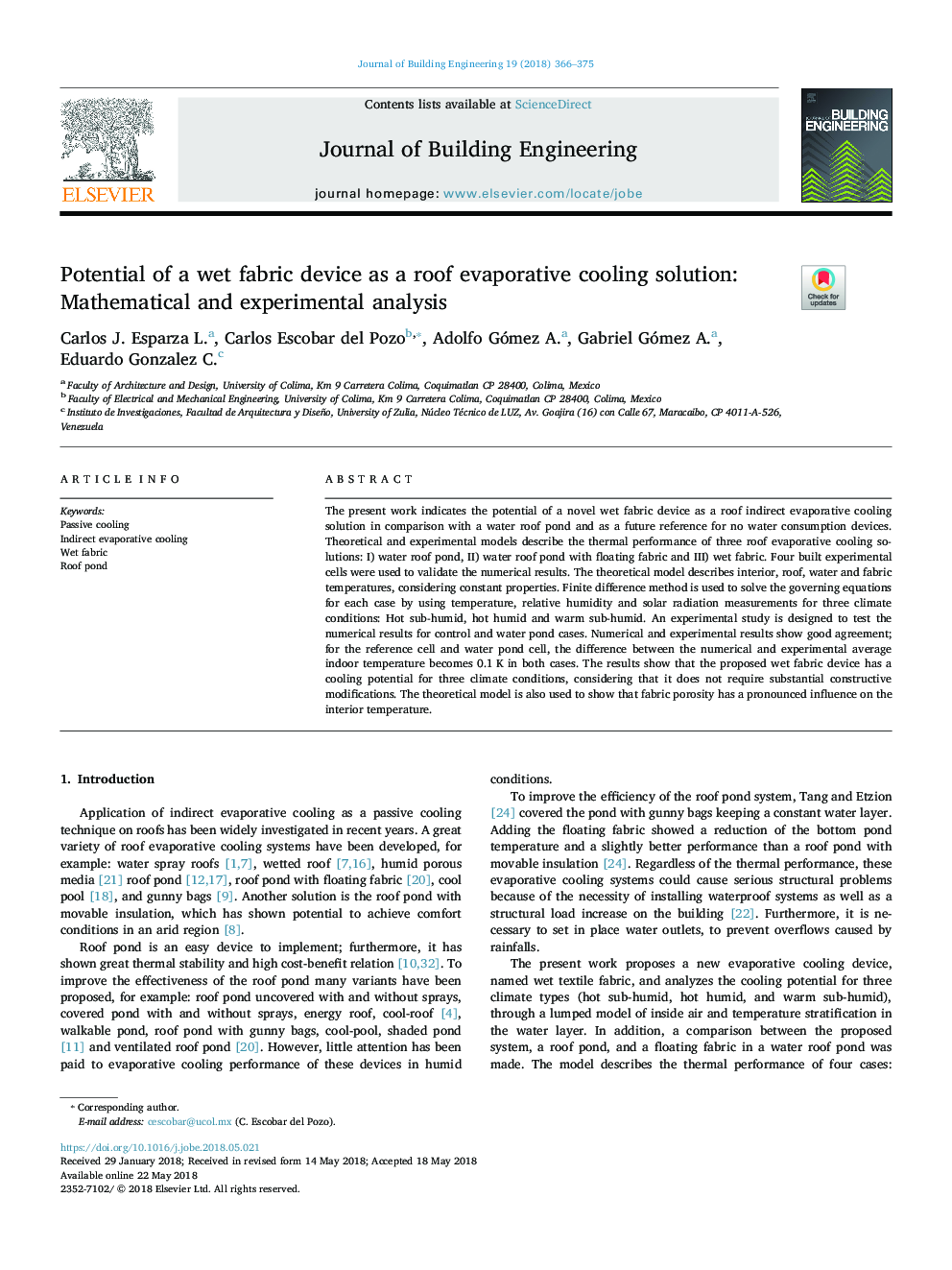| Article ID | Journal | Published Year | Pages | File Type |
|---|---|---|---|---|
| 6749785 | Journal of Building Engineering | 2018 | 10 Pages |
Abstract
The present work indicates the potential of a novel wet fabric device as a roof indirect evaporative cooling solution in comparison with a water roof pond and as a future reference for no water consumption devices. Theoretical and experimental models describe the thermal performance of three roof evaporative cooling solutions: I) water roof pond, II) water roof pond with floating fabric and III) wet fabric. Four built experimental cells were used to validate the numerical results. The theoretical model describes interior, roof, water and fabric temperatures, considering constant properties. Finite difference method is used to solve the governing equations for each case by using temperature, relative humidity and solar radiation measurements for three climate conditions: Hot sub-humid, hot humid and warm sub-humid. An experimental study is designed to test the numerical results for control and water pond cases. Numerical and experimental results show good agreement; for the reference cell and water pond cell, the difference between the numerical and experimental average indoor temperature becomes 0.1â¯K in both cases. The results show that the proposed wet fabric device has a cooling potential for three climate conditions, considering that it does not require substantial constructive modifications. The theoretical model is also used to show that fabric porosity has a pronounced influence on the interior temperature.
Related Topics
Physical Sciences and Engineering
Engineering
Civil and Structural Engineering
Authors
Carlos J. Esparza L., Carlos Escobar del Pozo, Adolfo Gómez A., Gabriel Gómez A., Eduardo Gonzalez C.,
